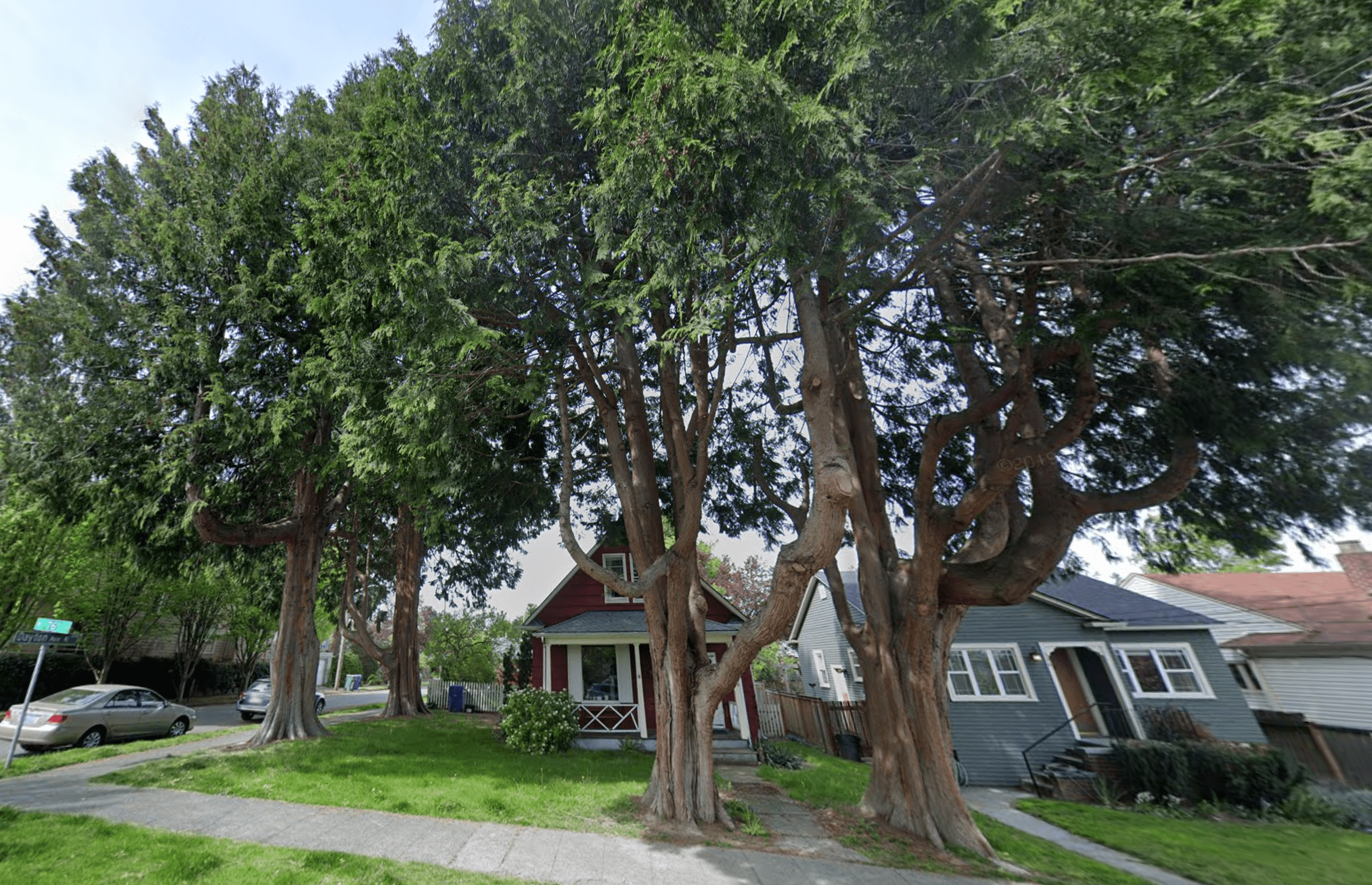

SDCI is about to approve the removal of Greenwood’s most significant conifer grove. A developer is proposing to build four townhomes on this property, and remove four massive Western red cedarswhile they’re at it. However, these cedars don’t need to be removed — in fact, just moving the building footprint over a few feet and removing two parking spaces would provide enough room to retain these gigantic trees and build the same amount of proposed housing.
The four Dayton Cedars were meticulously cared for by the former owner of this property before he passed away in 2016. In the words of a neighbor:
"We met William (“Bill”) Dyment when we moved into the neighborhood in 1995. He would speak of his love for “the trees” during most conversations! He told me that he was born in Ballard and his parents brought him home from the hospital to that house. He told me that “as a youngster” his family drove up toward Snoqualmie Pass and dug up the small seedlings. They planted them around the perimeter of their yard, and he tended them until cancer took his life in 2016, at what I would guess was his mid 80’s. He lived in that house his entire life, and loved those trees almost the same number of years. It has been one of my family’s greatest joys to see those trees mature 30 years on our watch!"
The developer has proposed planting 30 new trees across two properties they are developing, “replacing” the four cedars. Sounds great, right? But their current site design shows only small, ornamental replacement trees with no room for them to reach maturity. And under city guidelines, there is no room to plant these 30 trees and have the building they want.
Why? The developer's site designs show they want to "replace" these Western red cedars with Cascara trees. City guidelines require tons of planting space for Cascara trees, which get very wide at maturity. If the developer allocated this space for 30 Cascara trees, they wouldn't have any room for their proposed buildings. Concerningly, Cascara trees reach only 25 feet tall compared to the Western red cedar's 60 feet. They are also trees that need shade to survive, but there is no shade on this property.
Western red cedars are uniquely beneficial trees. Large conifers like these clean the air by trapping particulates in the little hairs on the backs of their needles. Seattle has 17% more air pollution than 10 years ago, and our air pollution is 10% higher than in similar-size U.S. cities. This is not the time to be removing massive Western red cedars.
An AIA-certified volunteer architect has shown one of the many ways all four trees could be saved while building the same amount of housing proposed by the developer. In fact, without any modification to the building drawings, the entire plan could be moved 10-12 feet north, which combined with removing two parking spaces, could save three of the trees or all of them.
To: bruce.harrell@seattle.gov, dan.strauss@seattle.gov, alexisMercedes.rinck@seattle.gov, sara.nelson@seattle.gov, kye.lee@seattle.gov, aegir@olsenanderson.com, permits@olsenanderson.com
Subject: Save the Dayton Cedars
Dear Mayor Harrell, City Councilmembers, SDCI Director Lee, Curtis Bigelow, and Aegir Olsen,
I am reaching out to ask you to protect the four iconic western red cedars on Dayton Ave N which are proposed to be clearcut for a construction project.
Decades ago, the Dayton Cedars were transplanted from Snoqualmie Pass, and were lovingly cared for by the late Bill Dyment until his death. They are not only a living legacy for the community, they provide irreplaceable benefits: clean air, cooling Greenwood’s growing heat island, and offering beauty and history that no replacement planting can replicate.
New housing can coexist with these trees. An architect has already demonstrated ways to retain all four cedars while building the same amount of housing currently proposed.
Seattle doesn’t need to lose its history or its trees while making space for new neighbors. Please save the Dayton Cedars.
Thank you,
[Your Name]
